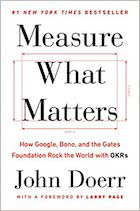“I thought you were a blind dog, but I see you are a keen-eyed lion.”
One of the most valuable lessons I learned when I created Mission Data was to hire well. Phrases like this have become more popular recently when people learned of the Steve Jobs quote, “A players hire A players, and B players hire C players,” and other similar quotes. Guy Kawasaki, who was there during the early Apple days, expanded on this quote with his own thoughts:
“My theory is that A players hire people even better than themselves. It’s clear, though, that B players hire C players so they can feel superior to them, and C players hire D players. If you start hiring B players, expect what Steve called ‘the bozo explosion’ to happen in your organization.”
Recognizing ‘A’ players
When I first moved to Kentucky and started working with a computer services firm there, I realized that out of the other twenty consultants they had at the company, only four of them were really good, people I would hire. I made a pact with myself that if I ever started my own company, I would only hire those people. Why?
As you can imagine, my first reason is that these people make problems go away. I looked at them as kindred spirits in that regard. The second reason is that because they were so good, I could learn from them, and as a result, I looked forward to learning from them at every opportunity. They taught me about Novell, Microsoft, and computer networks, and I taught them about Unix and the internet.
Income at your own consulting firm
What makes this even better when you own your own consulting firm is that these people are billing machines. Customers love them, and you can lease them out at your highest billing rates. If a decent consultant just works a normal 2,000 hour work year, and you bill them out at $100/hour, that’s $200,000 of revenue flow into your company. But if you can bill someone at $150/hour, that’s $300,000 of revenue.
Adding cost numbers to those examples, if you pay the first consultant $90,000/year, and pay the second consultant $125,000/year, the first one nets you (the business owner) $110,000/year, but the other consultant nets you $175,000 per year!
As a final consideration, I haven’t even discussed overtime here. It’s been my experience that this second class of employees seems much more willing to work (and bill) overtime hours. In general, they are more driven and money-oriented people, which for you, the business owner, is a very good thing.
Not just money, but time
While those numbers are powerful on their own, the other thing to consider here is how much of your time each class of employee requires.
In the first case, you’re probably paying the first consultant a little bit less because they’re not quite as good as the other person. In my field, they weren’t quite as good a programmer as the other people (they weren’t as fast), or they weren’t someone who could also run a project successfully. As a result, they required more assistance from other programmers, or they required more of my time to run their projects more successfully.
I know this is a cliche, but in the consulting field, where you bill for your time, it’s especially true: Time is money. Looking at this from only my perspective, if I work a sixty-hour work week, I begin each Monday knowing that my lesser employees will take up a certain amount of that week, let’s say twenty hours, while the higher-paid employees will take up very little time, let’s say two to four hours. That’s a huge difference, and for our fifteen-person company, those numbers weren’t an exaggeration. If you want to work fewer, happier hours, hire well.
Summary
| Learn the secrets of Google’s success | |

|
Measure What Matters |
Lesson learned: Hire self-sufficient people, give them what they need to succeed, you’ll all make a lot of money, and your life as a business owner will be easier.